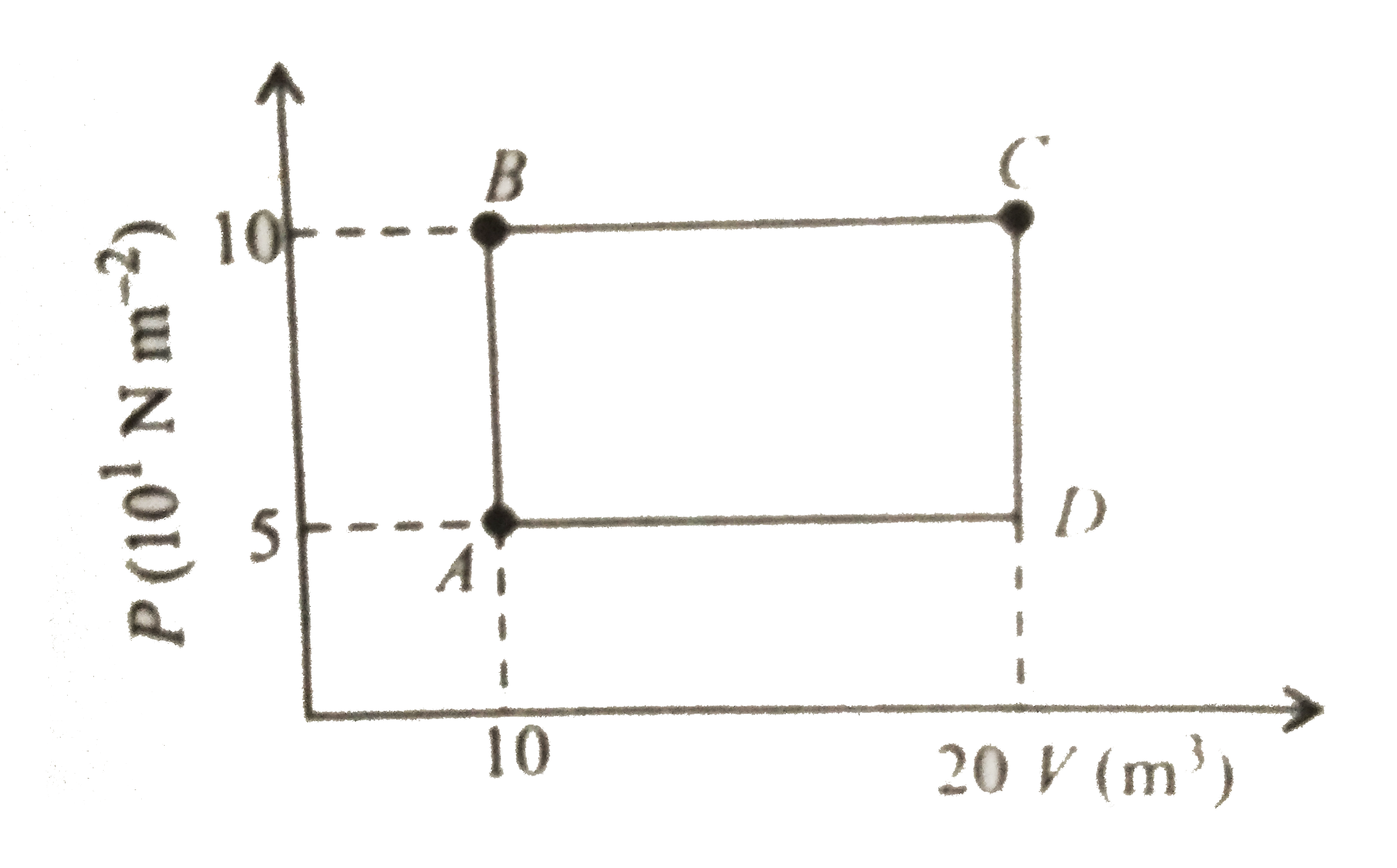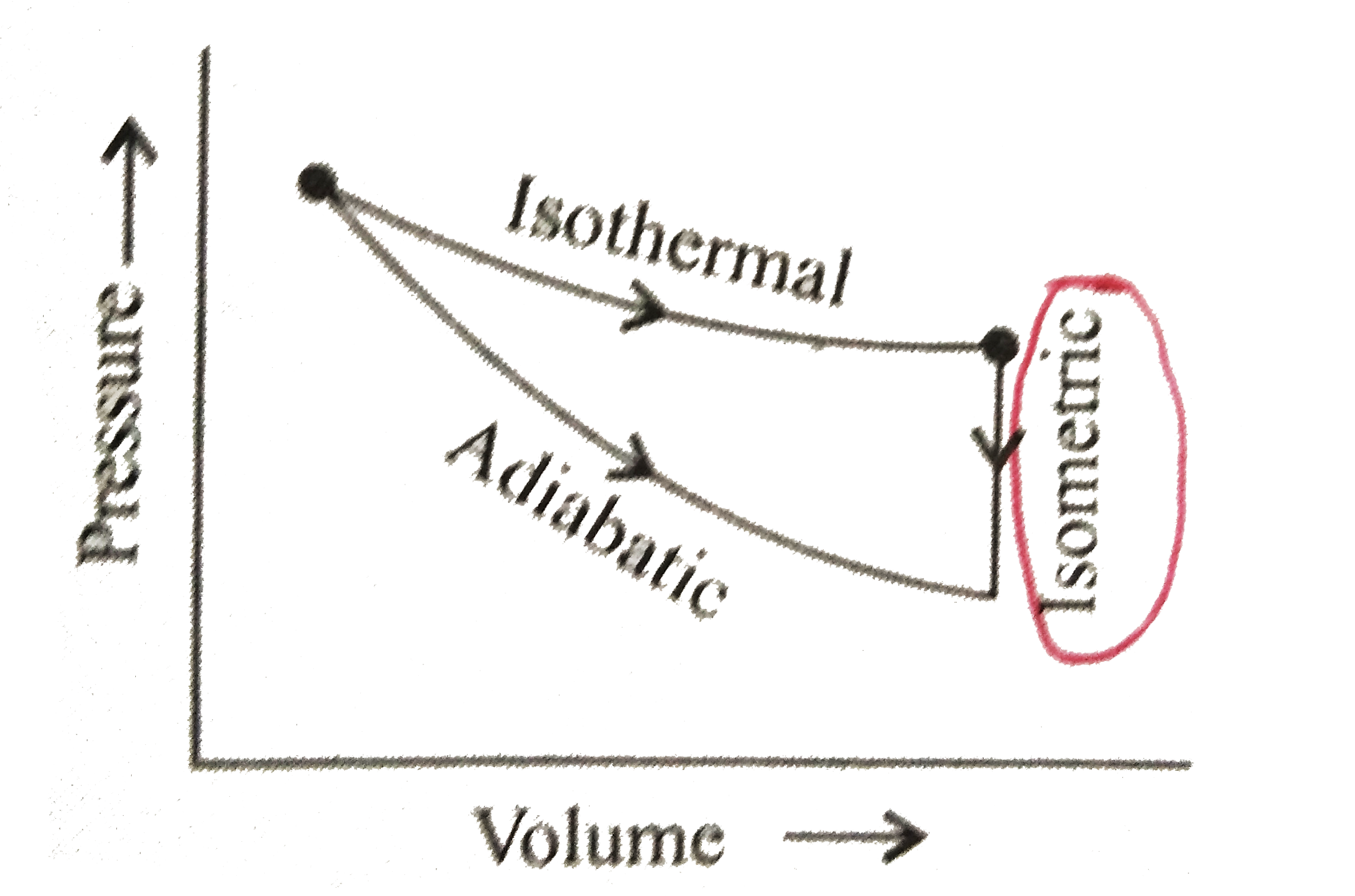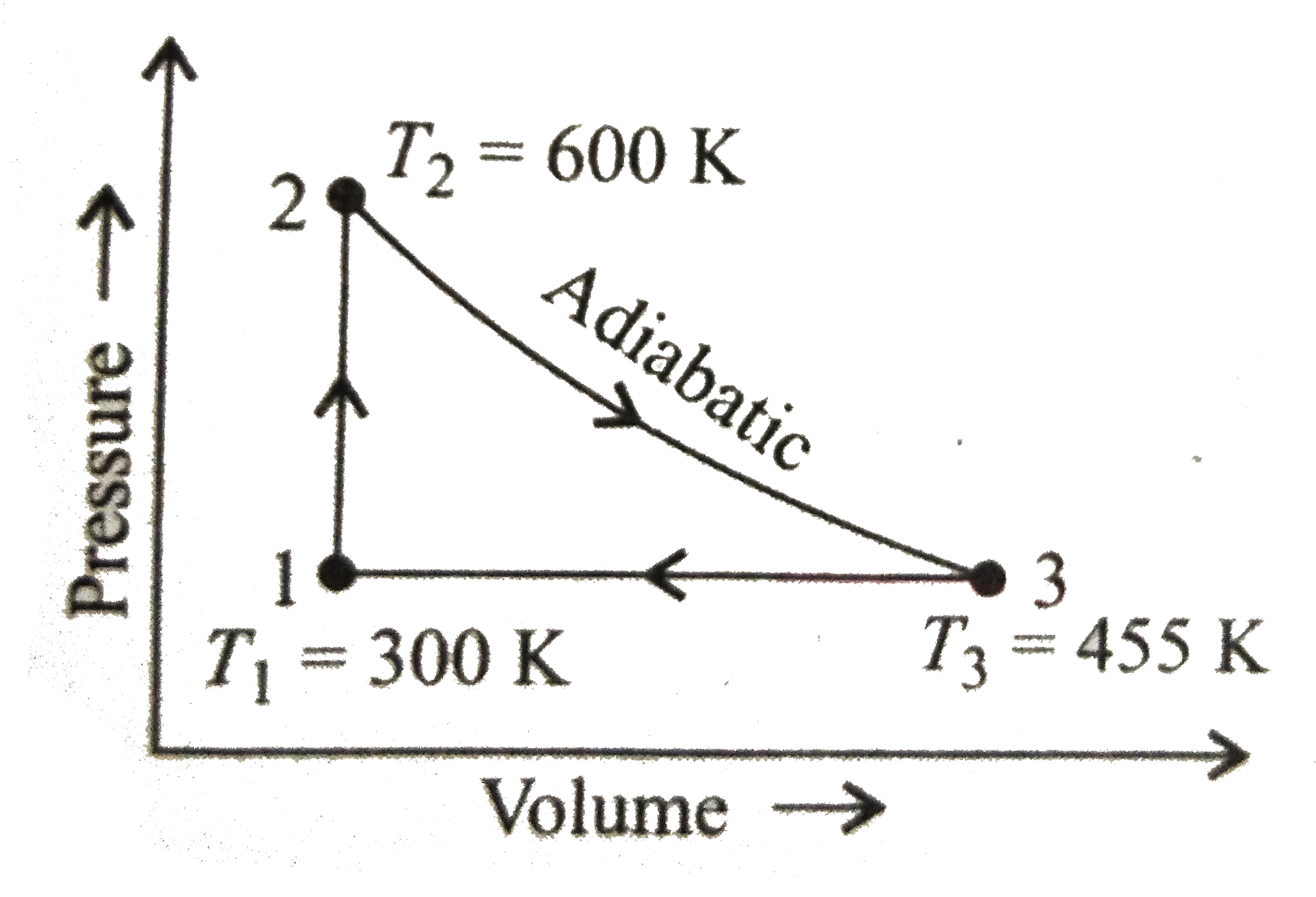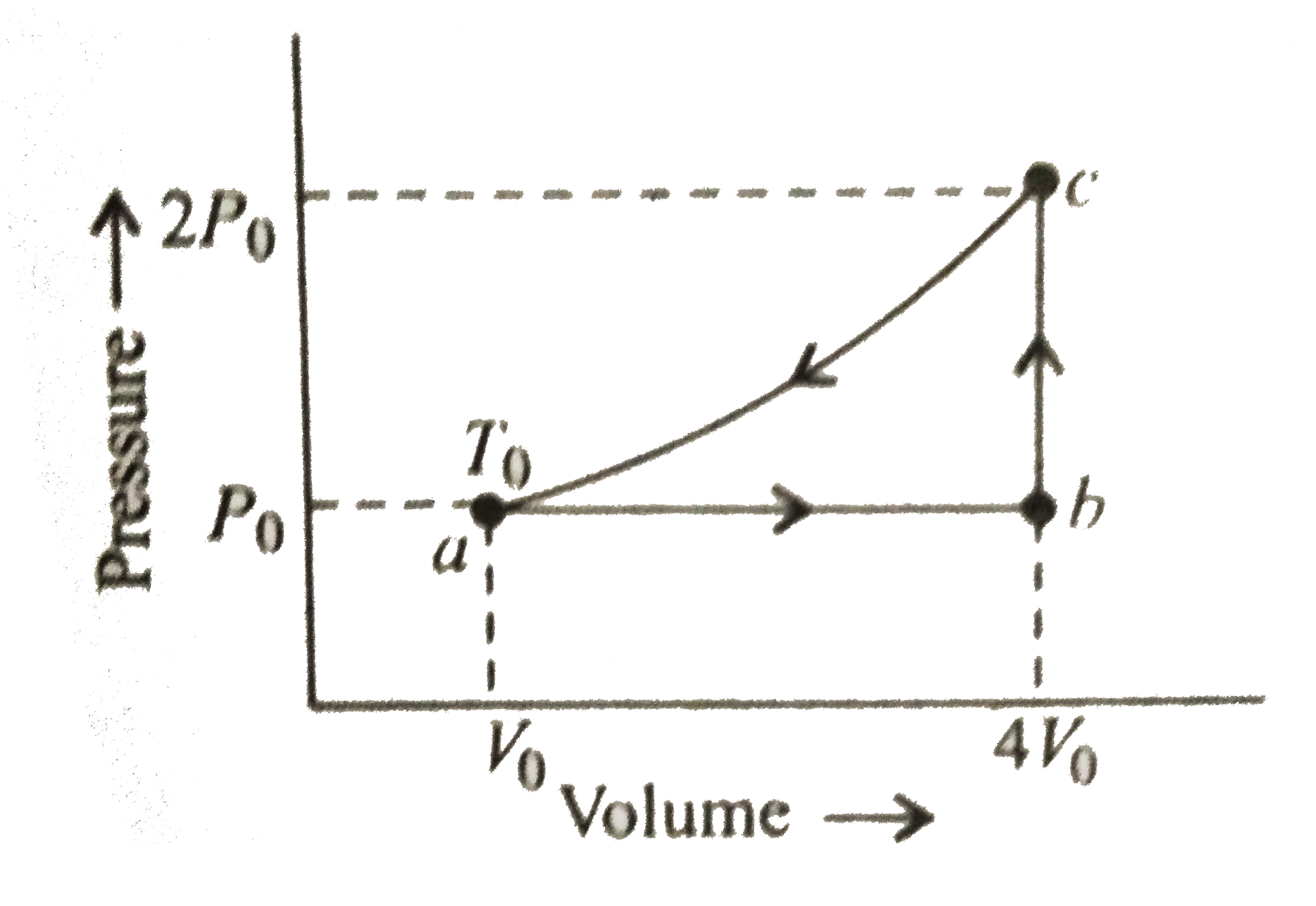Complete Solutions to Ex 6.1 of chapter THERMODYNAMICS of Class 11 book with complete answers and questions
| Class 11 | CHEMISTRY |
| Chapter | THERMODYNAMICS |
| CENGAGE CHEMISTRY | Ex 6.1 |
| Number Of Questions | 26 |
| Academic Year | 2023-24 |
Calculate `DeltaU`, internal energy change of a system, if it absorbs `25 kJ` of heat and does `5kJ` of work.
View SolutionIn a certain process, `400J` of work is done on a system which gives off `200J` of heat. What is `DeltaU` for the process?
View SolutionDuring a process, a system abdorbs `710J` of heat and does work. The change in `DeltaU` for the process is `460J`. What is the work done by the system?
View SolutionDuring a process, the internal energy of the system increases by `240kJ` while the system performed `90 kJ` of work on its surroundings. How much heat was transferred between the system and the surroundings during this process. In which direction did the heat flow?
View SolutionCalculate the work done when `1.0` mol of water at `373K` vaporises against an atmosheric pressure of `1.0atm`. Assume ideal gas behaviour.
View SolutionWhat will be the volume change if `607.8 J` of work is done by a system containing an ideal gas? The surroundings exert constant pressure of `20atm. (1L-atm = 101.3J)`
View Solution`500cm^(3)` of a sample of an ideal gas is compressed by an average pressure of `0.1 atm` of `250 cm^(3)`. During this process, `10J` of heat flows out to the surroundings. Calculate the change in internal enegry of the system.
View SolutionThree moles of an ideal gas are expanded isothermally and reversibly at `27^(@)C` to twice its original volume. Calculate `q, w,` and `DeltaU`.
View Solution`2.8g` of `N_(2)` gas at `300K` and `20atm` was allowed to expand isothermally against a constant external pressure of `1atm`. Calculate `DeltaU, q,` and `W` for the gas.
View SolutionState whther each of the following will increase or decreases the total enegry content of the system:
a. Heat transferred to the surroundings
b. Work done on the system.
c. Work done by the system.
View SolutionTwo moles of an idela gas at `2atm` and `27^(@)C` is compressed isothermally to one-half of its volume by an external pressure of `4atm`. Calculate `q,w`, and `DeltaU`.
View SolutionA simple of gas present in a cylinder fitted with a frictionless piston expands against constant pressure of `1atm` from a volume fo `2L` to `12L`. During the process, it absorbs `600J` of heat from the surroundings. Calculate the change in internal energy of the system.
View SolutionOne mole of an ideal mono-atomic gas at `27^(@)C` expands adiabatically against a constant external pressure of `1atm` from a value of `5dm^(3)` to `15dm^(3)`.calculate (a) `q` and (b) `w`.
View SolutionA `5L` cylinder contained `10` moles of oxygen gas at `27^(@)C`. Due to sudden leakage through the hole, all the gas escaped into the atmosphere and the cylinder got empty. If the atmospheric pressure is `1.0atm`, calculate the work done by the gas.
View SolutionAdiabatic expansion of an ideal gas is accompanied by
View SolutionFor a cyclic process, which of the following is true?
View SolutionOne mole of a gas is heated at constant pressure to raise its temperature by `1^(@)C`. The work done in joules is
View SolutionWhat work is to be done on `2mol` of a perfect gas at `27^(@)C` it is compressed reversibly and isothermally from a pressure of `1.01 xx 10^(5) Nm^(-2) to 5.05 xx 10^(6)Nm^(-2)`?
View Solution`1mol` of an ideal gas undergoes reversible isothermal expansion form an initial volume `V_(1)` to a final volume `10V_(1)` and does `10kJ` of work. The initial pressure was `1xx 10^(7) Pa`.
c. Calculate `V_(2)`.
b. If there were `2mol` of gas, what must its temperature have been?
View SolutionA sample of `2kg` of helium (assumed ideal) is taken through the process `ABC` and another sample of `2kg` of the same gas is taken through the process `ADC`. Then the temperature of the states `A` and `B` are (given `R = 8.3J mol^(-1)K^(-1))`

View SolutionAn ideal diatomic gas is caused to pass throguh a cycle shown on the `P-V` diagram in figure, where `V_(2) = 3.00V_(1)`. If `P_(1),V_(1)`,and `T_(1)` specify the state `1`, then the temperature of the state `3` is

View SolutionA heat engine carries one mole of an ideal mono-atomic gas around the cycle as shown in the figure below. Process `1 rarr 2` takes place at constant volume, process `2 rarr 3` is adiabatic and process `3 rarr 1` takes place at constant pressure. Then the amount of heat added in the process `1 rarr2` is

View SolutionOne mole of an ideal mono-atomic gas is caused to go through the cycle shown in the figure below. Then the change in the internal enegry in expanding the gas from `a` to `c` along the path `abc` is:

View SolutionCalculate the work done by `1.0 mol` of an ideal gas when it expands at external pressure `2atm` from `10atm` to `2atm` at `27^(@)C`
View Solution`3.0` moles of an ideal gas at `27^(@)C` is compressed at constant temp. reversibly form a volume of `20L` to `10L` slowly increasing the external pressure calculate work done on the gas `w,q,DeltaU` and `DeltaH`.
View SolutionWhen 3mole of an idela gas expand reversibly and isothermally five times its initial volume `6kJ` heat flow into it. What must be the temperature of the gas?
View Solution
Ex 6.1 questions and complete solutions for chapter THERMODYNAMICS of CENGAGE CHEMISTRY (ENGLISH) of Class 11
All Exercises from CENGAGE CHEMISTRY Class 11 CHEMISTRY THERMODYNAMICS
- Archives (Assertion-Reasoning)
- Archives (Fill In The Blanks)
- Archives (Interger)
- Archives (Multiple Correct)
- Archives (Single Correct)
- Archives (Subjective)
- Archives (True/False)
- Ex 6.1
- Ex 6.2
- Ex 6.3
- Ex 6.4
- Ex 6.5
- Exercise
- Exercises (Assertion-Reasoning)
- Exercises (Fill In The Blanks)
- Exercises (Interger)
- Exercises (Linked Comprehension)
- Exercises (Multiple Correct)
- Exercises (Single Correct)
- Exercises (Subjective)
- Exercises (True/False)
- Multiple correct Answer Type
- Paragraph for Problem
- Solved Examples
- True/False Type